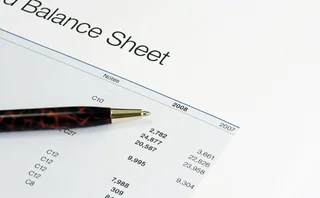
New Nordic exchange combines OMX feeds
Swedish exchange group and technology provider OMX has combined the market data from three of its subsidiaries, the Copenhagen, Stockholm and Helsinki exchanges, creating a single feed of Nordic market data, officials announced last week.
Belling said the intention is that, with the Nordic and Baltic markets brought together under one organisation and set of rules, the cost of capital will drop – as will the cost for customers to connect to OMX and its data feeds, while also making it easier and cheaper for OMX to add new markets and services.
The traded market is organised into three segments by size – large-cap, mid-cap and small-cap – and is divided into sectors according to the Global Industry Classification Standard (GICS) from MSCI and Standard & Poor's.
The Nordic Exchange will offer three main feed options: Nordic Equity Level 1, which includes best bid and offer, index values and company disclosures; Nordic Equity Level 2, which adds the top five best bid and offer prices; and Nordic Equity Level 2+, which will carry an order book with depth to 20 levels, research and analysis and index weights, as well as values, liquidity measurement indicators, corporate actions data and free-float information. Level 2+ will become available next year, Belling said.
For bonds and derivatives data, only a five-deep Level 2 feed will be available, he said. All data – whether from the Saxess equity trading system, the Click derivatives trading system, reference data or news from OMX's CDS Company Disclosure System — is collected by the exchange's Targin data platform. Belling said this means customers have to deal with only one price structure, one reporting system, one account manager and one audit process. OMX also plans to make corporate actions data and accounting data available via Targin in Q2 next year.
"Our main strategy is that all data will be provided by this system," Belling said. However, to reduce latency, Belling said OMX will allow vendors to connect directly to its trading systems using the FAST (FIX Adapted for Streaming data) protocol.
Belling said OMX currently provides data via 171 vendors to more than 130,000 real-time terminals – though this figure could include overlap of end users using multiple services to access data from the individual OMX exchanges under the previous structure.
Belling added that redistributors with a licence for Danish, Swedish and Finnish data should see a reduction of around 50% on the previous cost of buying data from the three exchanges separately, while end users should save around 25%.
For example, equities Level 2 data from all three exchanges, which would previously have cost €71 per user per month, will now cost €53. An annual licence fee for vendors will now cost €30,000 instead of €80,000, Belling said.
Only users who have a paid subscription or are part of a corporate subscription are able to print or copy content.
To access these options, along with all other subscription benefits, please contact info@risk.net or view our subscription options here: http://subscriptions.risk.net/subscribe
You are currently unable to print this content. Please contact info@risk.net to find out more.
You are currently unable to copy this content. Please contact info@risk.net to find out more.
Copyright Infopro Digital Limited. All rights reserved.
You may share this content using our article tools. Printing this content is for the sole use of the Authorised User (named subscriber), as outlined in our terms and conditions - https://www.infopro-insight.com/terms-conditions/insight-subscriptions/
If you would like to purchase additional rights please email info@risk.net
Copyright Infopro Digital Limited. All rights reserved.
You may share this content using our article tools. Copying this content is for the sole use of the Authorised User (named subscriber), as outlined in our terms and conditions - https://www.infopro-insight.com/terms-conditions/insight-subscriptions/
If you would like to purchase additional rights please email info@risk.net
More on Exchanges
Asia’s ETF assets on the rise – HKEX presents the results of Asia ETF survey 2019
Asia’s total ETF assets surged by 23.9% in the first half of 2019 thanks to an increasing adoption of ETFs into investment portfolios. According to a survey conducted by Hong Kong Exchanges and Clearing (HKEX), asset expansion in Asia’s ETF market is set…
NYSE Offers Exchange-Calculated Bitcoin Index, with More to Come
NYXBT will initially be based off data from Coinbase Exchange.
Deutsche Börse to set up Europe's first multi-asset RMB platform
German exchange group signs joint venture deal with CFFEX and Shanghai Stock Exchange
Exchange Revenue Figures Rise, Fall; Data Revenues Continue Steady Increase
A mostly positive mix of Q1 results also yield big increases in data revenues for some exchanges.
Lift-off for ASX Aussie dollar swap clearing business
Volumes jump following revamp of Sydney bourse's clearing incentive scheme
Exchange Data Revenues Make Positive Start to 2015
Acquisitions made up for some shortfalls in exchange revenues
CME looks to local banks for FX liquidity in emerging markets
Chicago-based exchange targets China, India and LatAm growth
Most read
- Basel Committee reviewing design of liquidity ratios
- Breaking out of the cells: banks’ long goodbye to spreadsheets
- Too soon to say good riddance to banks’ public enemy number one







